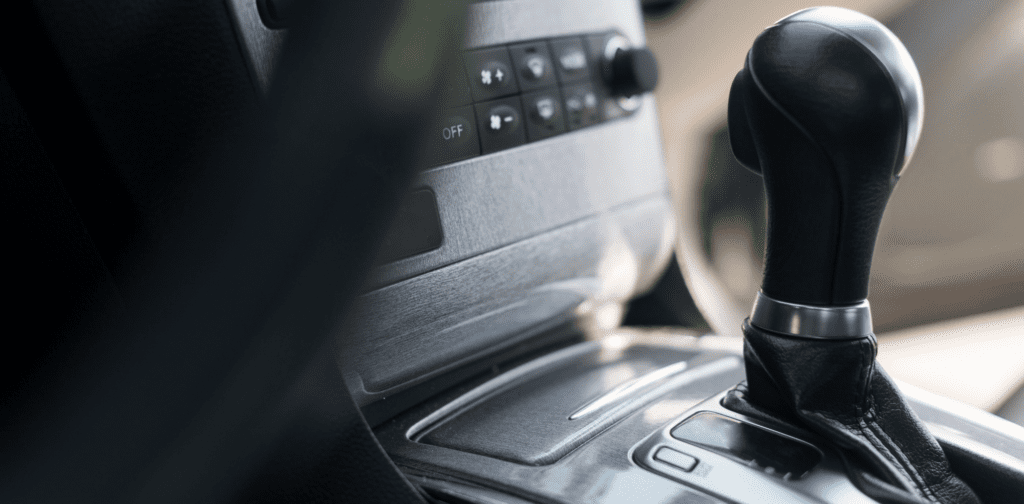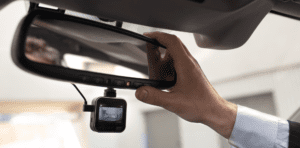Compare cheap car insurance
✔ Compare cheap car insurance quotes
✔ Over 110 insurance providers
✔ Get a quote in minutes
✔ Save up to £504*


Experiencing a stroke can significantly alter your life, particularly for those who are accustomed to using their car for daily commutes or as a primary source of income.
- Can you drive after a stroke?
- Do I need to tell the DVLA about my stroke?
- Do I need to inform my car insurance provider after a TIA or stroke?
- What kind of car should I drive after a stroke?
- What happens if my doctor says I’m not fit to drive?
- Alternatives to driving after a stroke
- What if I drive for a living?
- Can I still get car insurance after a stroke?
- Frequently asked questions
This summary provides crucial information on your ability to drive post-stroke and the subsequent implications on your car insurance policy.
Can you drive after a stroke?
The possibility of driving post-stroke is contingent on the extent of your recovery and the classification of the driving licence you have.
Legally, there is a mandatory period where you are prohibited from driving for at least one month subsequent to experiencing a stroke or a transient ischaemic attack (TIA), which is often referred to as a mini-stroke.
Learn more about driving after a stroke from the NHS
This stipulation is due to the potentially severe impacts a stroke may have on your driving capabilities. After a stroke, you may encounter:
- Visual impairments or total loss of sight
- Pain, weakness, or paralysis in arms and legs
- Equilibrium disturbances, accompanied by unusual nerve sensations
- Overwhelming fatigue
- Memory inconsistencies and concentration challenges
These complications can hinder your driving skills and overall road safety. Your eligibility to drive again is primarily determined by your healthcare provider, who will assess your physical and cognitive functions and decide whether it’s safe for you to resume driving.


This decision will be based on whether you have retained adequate eyesight and cognitive abilities that are essential for safe driving.
The road to recovery varies for every individual, with some regaining their ability to drive normally after some time.
For many, it is a gradual process that demands patience as full recovery can span from months to a couple of years, or even longer in some cases.
You must adhere to your physician’s advice and not rush the process to ensure your safety and the safety of others on the road.
How much can you save on your car insurance?
Do I need to tell the DVLA about my stroke?
The obligation to inform the DVLA (Driver and Vehicle Licensing Agency) about your stroke primarily depends on the lingering issues you face a month post the event.
However, the requirements differ slightly based on the type of vehicle you drive. For those driving buses, coaches, or lorries, immediate notification to the DVLA about your stroke is imperative.


To inform the DVLA is a straightforward process. You can either visit the official government website, GOV.UK, and complete the necessary form online, or alternatively, send a filled STR1 form directly to the agency.
For car drivers, the obligation to report your stroke to the DVLA arises under specific circumstances:
- Experiencing more than one stroke within a three-month duration
- Deterioration in your medical condition post-stroke
- Occurrence of epileptic seizures
- Undergoing multiple transient ischaemic attacks (TIAs)
- Having recently had brain surgery
- Receiving medical advice deeming you unfit to drive
Furthermore, if a month has elapsed since your stroke and you continue to endure memory lapses, visual impairments paralysis and weakness in limbs, reaching out to the DVLA becomes necessary.
Failure to disclose to the DVLA any medical conditions that impair your driving capabilities can lead to severe consequences. A fine of up to £1,000 may be levied for nondisclosure, and in the event that an undivulged condition results in an accident, legal prosecution might follow.
For residents of Northern Ireland, communicate with the Driver & Vehicle Agency (DVA), reporting any medical conditions influencing your ability to drive safely.
Always remember, that maintaining transparency about your health status not only adheres to legal standards but also significantly contributes to ensuring road safety for yourself and others.
How much can you save on your car insurance?
Do I need to inform my car insurance provider after a TIA or stroke?
Yes, you must inform your car insurance provider in the event of experiencing a stroke or a transient ischaemic attack (TIA).
This requirement holds even if you have obtained medical clearance to drive from your doctor. Failing to disclose this vital information to your insurance company could lead to the nullification of your policy, rendering it ineffective.
Driving post a TIA or stroke inherently encompasses increased risk factors, owing to the potential residual effects these medical events might exert on your physical and cognitive faculties.


These might include but are not limited to:
- Impairments in vision
- Coordination
- Concentration
- Reaction time
all of which are crucial for safe driving.
Given these elevated risks, insurance providers often necessitate official confirmation from your general practitioner (GP) or another qualified healthcare professional attesting to your capability to drive safely without posing a threat to yourself or other road users.
Your insurance provider may conduct a comprehensive assessment of your risk profile following your disclosure.
This process might entail adjusting your existing policy terms, conditions, and premiums to accurately reflect the new level of risk associated with insuring you as a driver post-TIA or stroke.
It’s also plausible that your car insurance premium may see an increase due to the perceived heightened risk.
It’s important to approach this process with transparency and honesty, providing all the required documentation and information to facilitate a smooth reassessment of your policy.
Engage proactively with your insurance provider and be prepared to comply with any additional requirements or stipulations they might impose to continue providing cover.


Being forthright about your medical condition not only ensures that you abide by the legal and contractual obligations set by the insurance company but also safeguards your financial and legal protection in case of an accident or claim.
Failure to comply might not only result in policy cancellation but could also leave you financially liable in the event of an accident, as the insurance would be invalidated due to nondisclosure of crucial information.
Therefore, taking the appropriate steps to inform and work collaboratively with your insurance provider is of paramount importance for maintaining valid and effective car insurance cover post-TIA or stroke.
How much can you save on your car insurance?
What kind of car should I drive after a stroke?
The selection of a car following a stroke is pivotal, as the right type of car can significantly ease your driving experience and enhance convenience.
It is essential to consider cars that encompass features facilitating easier driving, especially catering to any new limitations or challenges you might be encountering after the stroke.
Opting for an automatic transmission car might be highly beneficial since it eliminates the need to constantly shift gears, thereby simplifying driving tasks.


Cars equipped with power steering further contribute to a smoother driving experience as they require less effort and strength to steer, which is particularly helpful if the stroke has affected your upper body strength or dexterity.
Consideration should also be given to cars that offer special accessibility features, such as hoists and swinging seats.
A hoist can assist in lifting you into the driver’s seat, whereas swinging seats can pivot outward, making the process of getting in and out of the vehicle considerably easier and safer.
If you require customised modifications to your car to accommodate post-stroke physical conditions, there are cars available that can be tailored to meet specific needs.
Examples of these modifications include:
- Hand controls
- Left-foot accelerators
- Steering knobs
- Extended mirrors
These adaptations aim to make driving post-stroke safer and more comfortable, aligning with your unique requirements.
Furthermore, if your car undergoes modifications to aid your driving capabilities post-stroke, exploring disability car insurance is advisable.
This specialised insurance typically provides cover tailored to drivers with disabilities, taking into account the modifications and adaptations made to the vehicle.


If a stroke has resulted in enduring mobility challenges and you are a recipient of specific disability benefits, there are financial reliefs available.
You might qualify for an exemption from vehicle tax, or alternatively, be eligible for a substantial discount, sometimes up to 50%. However, to avail of these benefits, the car must be registered either in your name or in the name of a designated driver acting on your behalf.
Additionally, the car should be exclusively used for your personal needs and not used for commercial purposes.
Before making a decision, it might also be beneficial to seek professional advice from a driving assessment service or an occupational therapist specialising in driving.
These experts can offer personalised recommendations based on your post-stroke condition and driving needs, guiding you towards making an informed and safe decision regarding vehicle selection and modifications.
How much can you save on your car insurance?
What happens if my doctor says I’m not fit to drive?
Should your doctor deem you unfit to drive due to medical reasons, immediate action is required on your part.
You must inform both your car insurance provider and the DVLA (Driver and Vehicle Licensing Agency) about your current inability to drive safely as per medical advice.
Failing to communicate this crucial information constitutes a criminal offence, subjecting you to potential fines and legal ramifications.


Subsequent to the disclosure, you may be requested to undergo a driving assessment. This evaluation is typically conducted at a designated mobility centre, where your driving capabilities will be objectively assessed by qualified professionals.
The purpose of this assessment is to gauge your practical driving skills and cognitive function, providing a comprehensive analysis of your ability to drive post-medical conditions safely.
Based on the results of this assessment, the DVLA will then determine the appropriate course of action regarding your driving licence:
- You might retain your current licence and continue driving without restrictions.
- You might be issued a temporary licence, valid for a specified period ranging from one to five years. Upon expiration, your fitness to drive will be subject to another review.
- You might receive a licence with stipulations, mandating specific adaptations to your vehicle to accommodate your medical condition.
- In certain cases, your licence might be revoked entirely.
In scenarios where your licence is revoked, there’s still a possibility for future reinstatement. Once your physician provides medical clearance deeming you fit to drive again, you may initiate the process to reapply for your driving licence.
Choosing Not to Drive Post-Stroke
If, after experiencing a stroke, you decide voluntarily not to continue driving, you have the option to surrender your driving licence to the DVLA willingly.
This decision might be based on personal comfort, confidence levels, or the desire to eliminate risks associated with driving post-stroke. Should you later elect to resume driving, reapplication for a new driving licence is permissible.


For individuals opting not to use their cars during the recovery phase, and who wish not to bear the expenses of vehicle tax and insurance, a Statutory Off Road Notification (SORN) should be declared. This declaration legally exempts the vehicle from tax and insurance requirements while it’s not in use.
The decision to continue driving rests solely with you, even if medically cleared to do so. Reflect on your comfort, confidence, and ability to navigate the road safely before making a decision. Always prioritise your safety and the safety of others while considering resuming driving after a stroke.
How much can you save on your car insurance?
Alternatives to driving after a stroke
Should medical conditions post-stroke necessitate the surrendering of your driving licence, exploring alternative transportation methods becomes imperative to maintain mobility and independence.
Various transportation options are available, designed to cater to individuals with disabilities and limitations:
Community Transport Services
Many local councils proactively offer community transport schemes, specifically tailored for individuals with disabilities unable to use conventional public transportation.


These schemes are designed to facilitate ease of movement, often providing door-to-door services or operating along predetermined routes within the community.
With trained staff and adapted vehicles, these services offer comfortable and accessible transit options, accommodating your specific needs and ensuring a safe journey.
Access to Work Grant
For individuals whose disabilities impede the use of public transport, the Access to Work scheme stands as a valuable resource.
This initiative provides financial support to cover the costs associated with commuting to and from your workplace. Examples of expenses covered under this grant include taxi fares, which offer a convenient and personalised mode of transport.


Additionally, the grant can be utilized to fund adaptations to your vehicle, making it more accessible and suited to your needs, thus facilitating your return to work.
Mobility Scooters
The ShopMobility service is an excellent initiative that allows for the hiring of powered scooters. This service is especially beneficial if you require assistance with shopping tasks or accessing recreational and leisure facilities.
Mobility scooters offer a sense of independence, allowing you to navigate through shopping centres and public spaces with ease and confidence.
Public Transport Alternatives
If your post-stroke condition allows for travel via public transport, consider leveraging discounts and passes available for individuals with disabilities.
For example, a Disabled Person’s Railcard can offer significant reductions on rail fares, making train travel more affordable.
Similarly, you might be eligible for a free bus pass, allowing for unrestricted travel on local buses, which could significantly enhance your mobility within your community without incurring additional costs.
Additional Options
- Taxi Services & Rideshares: Consider regular taxi services or app-based rideshare platforms, many of which now offer vehicles that are adapted for individuals with various disabilities.
- Volunteer Driver Programs: Some communities have volunteer driver programs where volunteers use their vehicles to help transport those who are unable to drive due to medical reasons.
Before opting for any of these alternatives, it is important to assess your specific needs, limitations, and preferences.
Ensure that the chosen mode of transportation aligns with your medical requirements and provides the necessary comfort and convenience to support your post-stroke lifestyle.
Engage with your healthcare provider or a mobility consultant to make informed and safe choices regarding your alternative transportation options post-stroke.
How much can you save on your car insurance?
What if I drive for a living?
If your livelihood is significantly tethered to driving, experiencing a stroke undeniably poses substantial challenges to both income and daily living.
Post-stroke, there might be a way to temporarily continue your driving responsibilities, or in some instances, consider alternative employment paths that do not involve driving.
The stipulations related to returning to driving vary depending on the specific nature of your driving employment:
Taxi Driver
As a taxi driver, mandatory disclosure of your stroke and any associated health conditions to your local authority is non-negotiable. The local authority is responsible for evaluating your medical fitness against the stipulated medical standards for professional drivers.
This assessment is crucial for determining your eligibility to resume driving a taxi, as it takes into consideration the safety of both the driver and the passengers.
Lorry or Bus Driver
Individuals engaged in driving lorries or buses are subjected to stringent regulations post-stroke.
Typically, there is a mandatory suspension period of at least one year following a stroke or transient ischaemic attack (TIA).
This suspension allows ample time for recovery and medical evaluation, ensuring you can meet the rigorous medical and safety standards essential for operating large vehicles.
Police Vehicle or Ambulance Driver
For those driving specialised vehicles like police cars or ambulances, the duration of time off the road is generally determined at the discretion of your employer.
However, it is common for employers in these sectors to adhere to guidelines similar to those applied to lorry or bus drivers, considering the critical nature of these roles and the imperative for utmost safety and responsiveness while on duty.
Exploring Options and Benefits
Engage proactively with your employer to discuss and explore available options. Depending on your recovery and the flexibility of your workplace, you might consider retraining for alternative positions within the organisation that do not require driving.
If resuming your previous role is unfeasible due to your medical condition, it is advisable to investigate the array of benefits you may be eligible for, providing financial support during this transitional phase.
Seeking Professional Advice
Your local Jobcentre Plus can be a valuable resource in this scenario. Employment advisors specialising in disability are available to offer guidance and support, helping you navigate through the process of identifying and securing suitable employment opportunities that align with your post-stroke capabilities and restrictions.
Financial Support
Understand the spectrum of financial assistance available to you, including disability benefits, income support, or Employment and Support Allowance (ESA).
Engaging with a financial advisor or counsellor knowledgeable in disability benefits can provide clarity and assistance in securing the support you are entitled to.
Career Counselling
Consider seeking career counselling or vocational rehabilitation services. These professionals can offer personalised advice and resources to support your transition into alternative employment that accommodates your new set of capabilities and limitations post-stroke.
Taking a thoughtful and proactive approach, armed with information and support, can significantly ease the transition and adjustment process as you navigate through the implications of a stroke on your driving-dependent profession.
How much can you save on your car insurance?
Can I still get car insurance after a stroke?
Getting car insurance post-stroke is indeed possible, provided you are certified as able to drive.
However, the presence of a medical condition like a stroke may result in higher premium costs, as insurance companies might view you as a riskier client.
Additionally, if your car requires modifications to accommodate your post-stroke driving needs, anticipate further increases in your insurance costs.
To secure a cheap car insurance quote, you should compare car insurance quotes available in the market.
Frequently asked questions
After experiencing a stroke, you are required to refrain from driving for a minimum of one month, and this period extends further for individuals driving larger vehicles.
Resumption of driving activities post this mandatory waiting period is contingent upon the enduring impairments you might have incurred due to the stroke.
For precise guidance tailored to your health status and its implications on your driving capabilities, consult with your General Practitioner or dedicated stroke team.
Once you receive medical clearance indicating it’s safe for you to drive, you may resume driving whenever you feel comfortable and ready to do so.
No, even after a mild stroke, you are required to cease driving for at least one month. Resumption of driving is permissible only upon receiving approval from your physician.
Individuals who have had a TIA often regain their driving privileges relatively quickly. However, if you’re grappling with residual effects like visual impairment, mobility challenges, or memory issues, a period of rehabilitation may be necessary.
Additionally, you might be required to successfully complete a driving evaluation prior to navigating the roads once more.
Should a stroke adversely affect your ability to move, you may qualify for a Blue Badge, which grants you access to parking spaces situated near your destination. This permit is applicable whether you are driving or merely a passenger.
Receiving specific benefits, like the higher rate of the Disability Living Allowance (DLA) or a Personal Independence Payment (PIP), automatically makes you eligible for a Blue Badge.
Alternatively, you can submit an application to your local council for consideration of your eligibility. For comprehensive details regarding the Blue Badge scheme and eligibility criteria, kindly refer to the official GOV.UK website.
The Motability Scheme is a unique car lease program designed for individuals eligible for specific benefits including Higher Mobility Disability Living Allowance (DLA), Personal Independence Payment (PIP), War Pensioners’ Mobility Supplement, and Armed Forces Independence Payment.
This initiative allows you to allocate a portion or the entirety of your mobility allowance towards leasing a vehicle equipped with necessary adaptations, facilitating your driving endeavours post-stroke.
Even if driving is not an option for you, the scheme provides the flexibility to appoint up to three individuals who can drive on your behalf. This provision is to ensure that you can continue to benefit from mobility for various purposes such as running errands or grocery shopping.
For a thorough understanding of eligibility criteria and additional information, consult the official Motability website.
Yes, a driving assessment post-stroke may be necessary, especially if mandated by the DVLA. Voluntarily undergoing such an assessment can also be beneficial for your personal assurance since it’s natural to experience a dip in confidence regarding resuming driving after a stroke.
Driving Mobility, a charitable organisation, provides assessment courses at multiple venues throughout the UK. During these sessions, an evaluator will offer candid feedback on your driving capabilities.
Additionally, the Royal Society for the Prevention of Accidents (RoSPA) conducts assessments designed for stroke survivors, aiming to bolster both their confidence and proficiency in driving. For information on locating a nearby refresher training center, please reach out to RoSPA directly.











